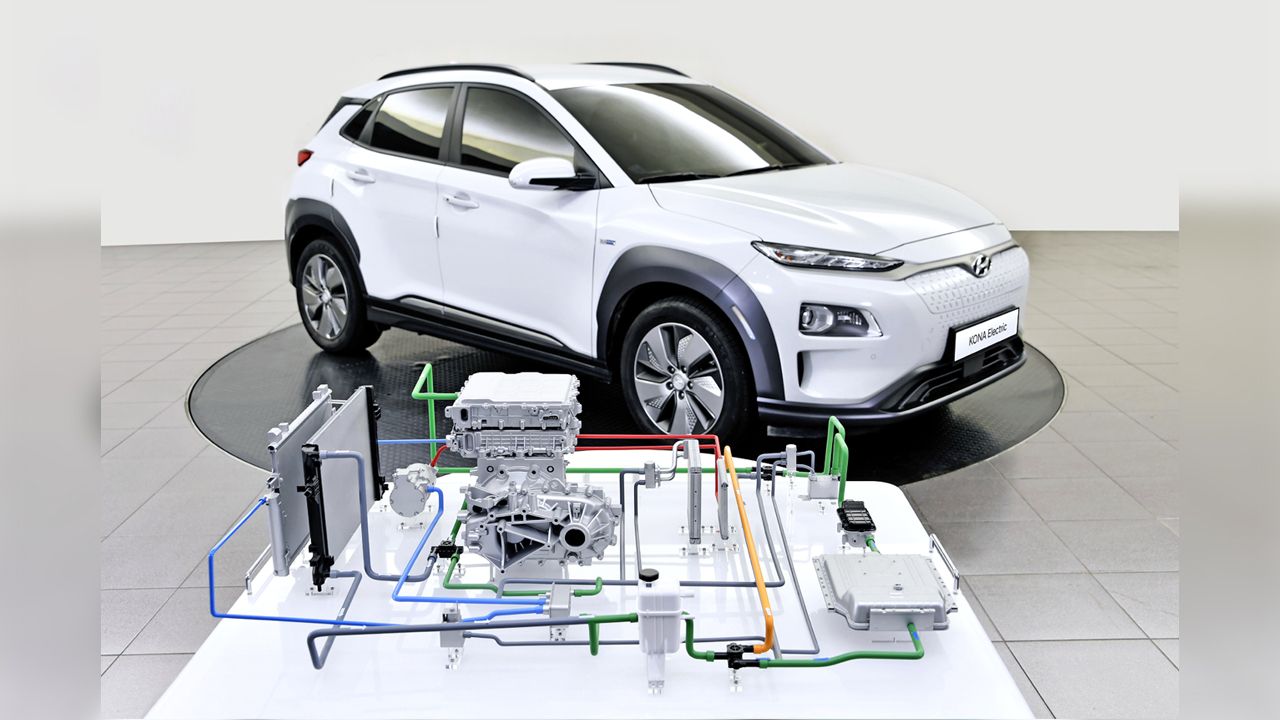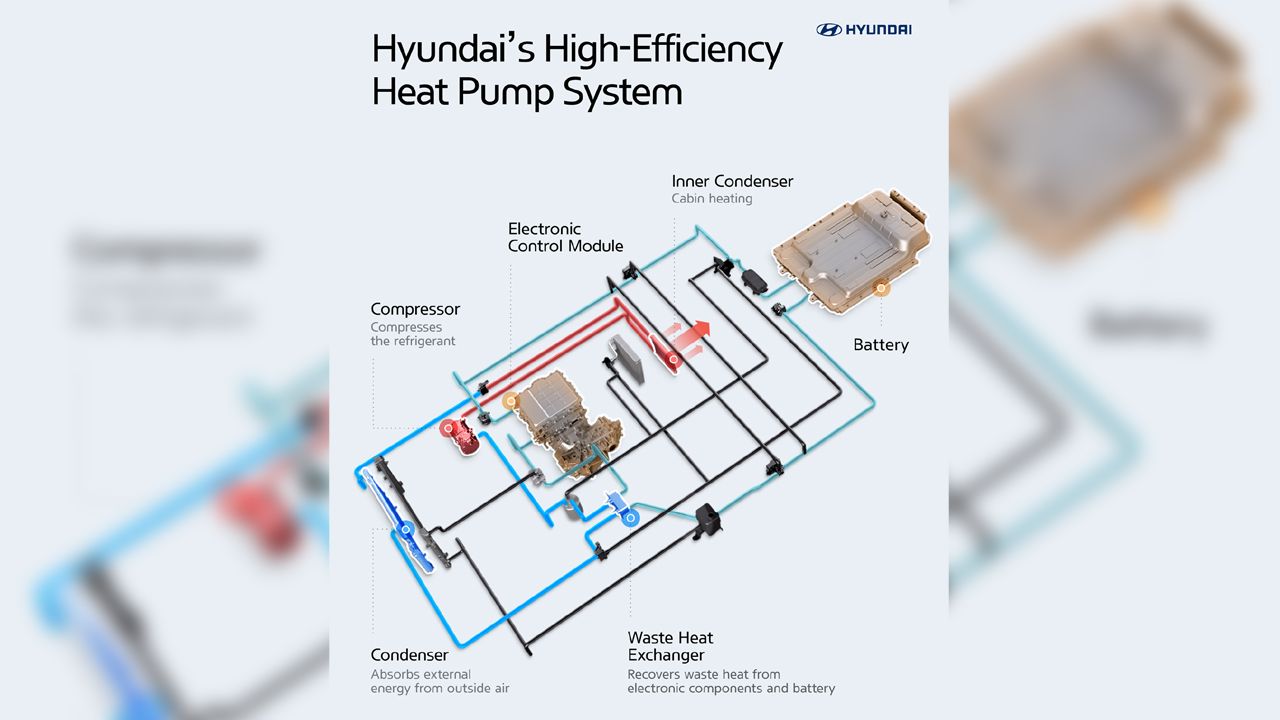
The heat pump technology, deployed in Hyundai & Kia's global EV line-up to maximise driving range in low temperatures, can now scavenge heat from more sources to further optimise the battery range.
Hyundai Motor Company (HMC) & Kia Motors Corporation have revealed an improved version of their heat pump technology for EVs. For those not aware, the heat pump on an EV collects waste heat from multiple sources (such as drive motors, on-board chargers, and inverters) and allows a driver to use it for heating the vehicle's cabin, a feature especially handy in low-temperature climates. So, in a way, the heat pump helps in effective recycling of the heat that would otherwise be lost. Due to this, little additional power is required by the HVAC (Heating, Ventilation & Air Conditioning) operations and therefore, the driving range remains unaffected.
First introduced in 2014 on the 1st-gen Kia Soul EV, the heat pump tech meant that the Soul EV could deliver the promised driving range even in cold temperatures. Now, HMC & Kia claim that the heat pump tech is now capable of recycling waste heat not only from the Power Electric (PE) modules but also from the battery pack & slow charger.
This improved heat pump setup was recently put to test on a Hyundai Kona Electric during the Norwegian Automotive Federation's (NAF) validation test. In severely cold conditions, the Kona Electric was able to offer 91% of its WLTP combined cycle range, a deviation of only 9% from its claimed all-electric driving range.
Read more:
Hyundai Kona Electric vs MG ZS EV: Spec comparison
Hyundai evaluating Fuel Cell Vehicles for India
Interview with Tarun Garg, Director, Sales & Marketing, Hyundai Motor India






















Write your Comment